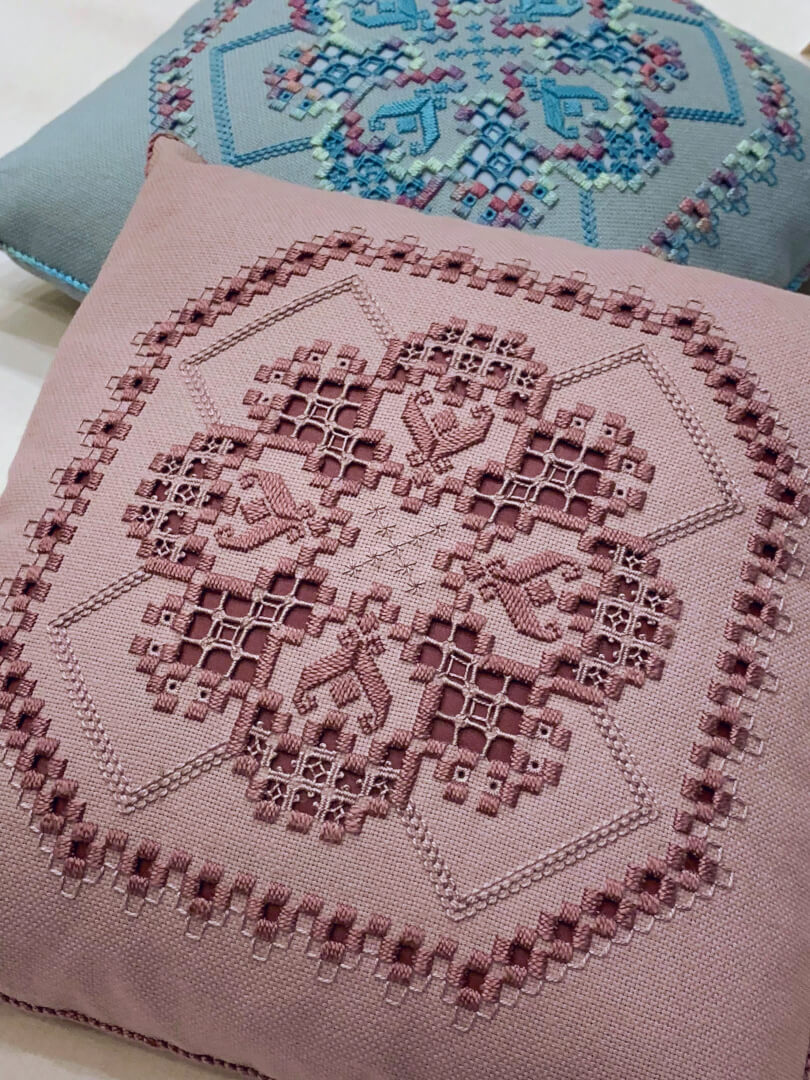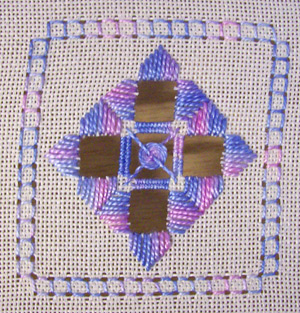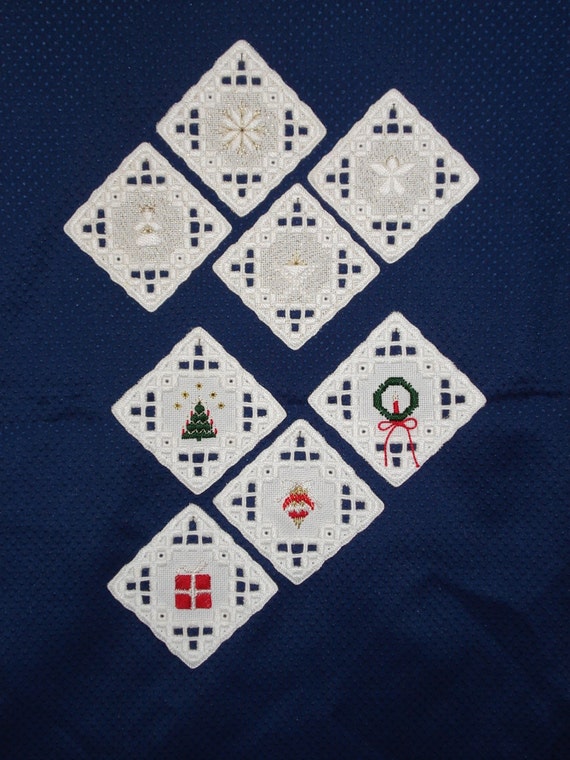Have you completed the first project in my beginner guide to hardanger course? Ready to move onto the next stage? Excellent!
This time we will work on a sweet little design that covers three different stitches; Kloster blocks, wrapped bars and dove's eyes.
We have some excellent resources for additional tips, tricks, and patterns. Beginner’s Charted Hardanger Embroidery (0105) Advanced Charted Hardanger Embroidery (0106) Hardanger Embroidery Favorites (0101) Fundamentals Made Fancy (11206) Basics and Beyond (11205) Take the Hard out of Hardanger (book) (0852). Hardanger Embroidery for Beginners. I found a beautiful butterfly pattern in hardanger embroidery that includes four pages of instruction called, Starting Hardanger Embroidery. It’s from a Home Art Series booklet edited by Flora Klickmann titled Hardanger and Cross Stitch. There are several things you can do with this butterfly. Learn hardanger embroidery the easy way, with my free online course. From the basic beginner stitches to more advanced techniques, I will walk you through the steps required. You will learn; how to stitch Kloster blocks (the satin stitch blocks that surround the lacy areas of a hardanger pattern), how to cut the fabric threads for the openwork.
What will I need?
Beginning Hardanger Patterns Printable
- 8-inch square of Hardanger 22 count fabric
- Pearl cotton nos. 5 and 8 (5 is the thicker one)
Let's get started
Start by downloading the hardanger pattern for this lesson. The file is in pdf format and most computers will have a program that can read these files, such as Adobe Reader or Preview on a Mac.
Stitching the Kloster blocks
Start by finding the centre of the fabric, by folding it in half both ways and lightly creasing the centre. Count up 19 threads from the centre and two to the left to reach point A on the chart. This is our starting point.
Thread up your needle with a longish length of the pearl no. 5 and tie a knot in the end! I know, everyone says you shouldn't use knots, but we will not leave it in our work.
Push the needle through from the front of your work outside of where you are going to stitch, leaving the knot on the front.
Work the first five satin stitches as numbered on the top section of your chart.
Count the number of fabric threads you are stitching over carefully: four, five, six, five and then 4 fabric threads. Continue by counting over four fabric threads and repeat the sequence of stitches to work the next Kloster block, as shown in the diagram above, carrying the thread diagonally across the back between blocks that are positioned in a straight line.
When you reach the corner, avoid carrying the thread across the diagonal marked with a red X on the diagram. Instead reuse hole 19/21 and take the next stitch out to the side as shown.
If you find you are running short of thread, try not to join in a new piece whilst working a Kloster block. Finish the block first, then start a new piece of thread. Why? If you start a new piece part way through a block it will be noticeable, as the shine wears off the thread a little when repeatedly pulled through the fabric. The new thread, of course, will still be shiny.
The photo below shows our beginner guide to Hardanger project at this stage, with all the Kloster blocks completed.
Cutting the fabric threads
Now this is the point where, in my beginner guide to Hardanger workshops, I remind people to breathe!
It is quite important as I don't want students passing out in class. Holding your breath seems to be an automatic reaction to the cutting part of learning Hardanger.
Right, so take a sharp, pointed pair of scissors and let's cut.
The fabric threads to cut are shown on the chart by red lines inside the Kloster blocks.
Only cut threads at the end of the satin stitches, not alongside them!
It is safest to slide the scissor blade underneath all four adjacent threads at once, then double check that you only have four, before cutting them in one movement.
Cut as close to the satin stitches as you can, but do not worry about any small tufts left afterwards. These will bury themselves in the satin stitches when you wash the piece.

When you have cut the required threads, your beginner guide to hardanger project should look like the photograph.
Working the overcast, or wrapped, bars
We covered needle woven bars in the first lesson. Here we are going to do overcast, or wrapped bars.
Re-thread your needle with the thinner, number 8, thread. We will use this to wrap the remaining fabric threads in the center of our design, creating a neat openwork grid.
Start by following the red diagonal row on the chart.
Pull all four fabric threads together firmly, by taking the thread over, then under. Make sure each stitch lays flat beside the previous one, not on top of it. Fill the bar, noting the number of wraps taken, so that you can use the same number on each bar.
When you reach the Kloster blocks at the end of the row, thread the needle up through the back of the nearest block to reach the starting point for the next row. This row will finish at the point marked A on your chart.
For the next row I have coloured the bars that complete a square in green on your chart. These are to act as a reminder that when working this bar you will need to complete a doves eye stitch. So before I give instructions for doing those, wrap half of your first 'green' bar.
How to work a doves eye
You worked square filets in the first lesson in this beginner guide to hardanger. This time we are going to introduce dove's eyes. We will stitch four in this design.
The dove's eye filling stitch comprises four buttonhole stitches, placed in the centre of a 'square'. This square can either be formed by working four wrapped bars or a combination of bars and Kloster blocks. The diagram above shows a dove's eye stitch worked inside four Kloster blocks.

It is important to make sure that all four loops in the dove's eye cross in the same direction to keep things neat.
To work the stitch as you wrap a bar, come up in the centre hole, then take the needle under the adjacent bar (you can work clockwise or anti-clockwise). Bring the needle back up inside the loop you have just made, pulling the loop into shape until it fits comfortably (not loose but also not stretched too tight). Repeat this process until you reach the fourth bar.
To complete the stitch, take the thread under the first loop you made and back down into the middle. Then finish wrapping the fourth bar. Try to make all your dove's eyes the same size with the same amount of tension.
Finishing your project
With this stage of the beginner guide to Hardanger complete, you can use your finished piece as a coaster, mount in into an aperture card, make it into a pincushion with a satin lining, or as a Christmas tree ornament.
Have fun and I would love to see a photo of your finished piece.
You might like these
Hardanger needlework course- lesson one
Start your hardanger needlework course here. Learn hardanger over a series of step by step lessons using my free patterns
Free hardanger patterns - Christmas card
Included in our free hardanger patterns is this sweet Christmas card. Simple to stitch with no cutting, you will have it finished in no time
Simple Hardanger Instructions - lesson 4
Part 4 of my hardanger instructions series. Learn four sided stitch and spiders web filling in addition to fancy kloster blocks and needleweaving
